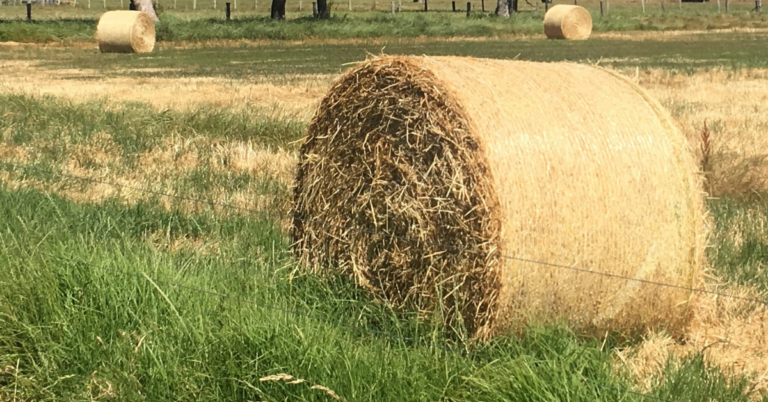
Feed test results from 60 hay or silage samples sent in by growers under Western Beef Association’s Better Hay and Silage Project and what could be learned from them was the topic of a recent live webinar.
Couldn’t make it on the day? No problem. Here’s what we learned. Or you can even watch a recording of the full webinar online here.
South West NRM Sustainable Agriculture Manager Peter Clifton was invited to help facilitate questions at the Western Beef event with more than 30 growers in attendance.
The webinar featured a presentation by farm consultant and researcher Dr Martin Staines who discussed his analysis of the results.
The importance of energy in feed
He started by outlining the importance of energy in feed, explaining how higher energy can increase daily weight gain.
Dr Staines said the difference in quality between the Top 5 hay samples and Bottom 5 hay samples represented a difference of 0.5 kilograms per day weight gain.
Protein was low in all hay samples, with 40% of hay samples having less than the minimum required for maintenance (8% protein) and only 20% of hay samples had protein content over 12%.
Tips for increasing protein
- Add legumes into crops or pastures
- Supplement with legume hay
- Supplement with lupins or canola meal
- Supplement with urea (with caution)
Thirty silage samples were sent in and analysed. Silage quality was lower than expected, suggesting that growers weren’t getting an optimal return on the cost of producing silage.
Only one third of silage samples had the correct dry matter content which could improve fermentation (watch this video to help assess dry matter content).
Ammonia was tested as an indicator of protein breakdown occurring during fermentation with the target to be less than 10%. Unfortunately, all samples, even the top ones, were greater than 10% indicating all samples were not as good as expected.
Silage acid content should be above 5% but again all samples were below this. The Top 5 averaged 4.5% and the Bottom 5 samples averaged 2.1%.
The West Australian hay samples ranked higher in ME than the national average so we are doing some things well over here.
Unfortunately, silage ME was only 0.2MJ higher than hay, a lot less than expected.
Silage vs Hay
In Dr Martin’s opinion, the increase in silage quality was not enough to justify the increased cost compared to making hay on farms.
“Silage typically costs double the forage it was made from whereas hay is typically 40% more expensive than the product it was made from which calculates to an $80 per tonne difference between silage and hay, and in my view, the extra feed quality that was achieved was not justified,” he said.
In all cases fibre was rather high indicating that the material it was made from was relatively mature.
This indicated that growers in WA were probably cutting too late and therefore the energy was dropping.
Tips for increasing ME
Along with cutting earlier, Western Beef Executive Officer Dr Jeisane Accioly and Dr Martin Staines also had some other tips for increasing ME:
- Tedding immediately after mowing to speed the wilting process.
- Cutting the crop seven centimetres above ground level. This sounds counter-intuitive as you think cutting lower will give you more volume, but Jeisane says there is a cost in cutting too low. The risk of soil contamination is higher, wilting is less effective and potential regrowth is compromised.
The webinar can be viewed in full on YouTube.
To improve hay and silage production, watch this video featuring consultant Dario Nandapi.
The Better Hay and Silage project is coordinated by Western Beef Association Inc and received funding from the Australian Government’s Future Drought Fund.
